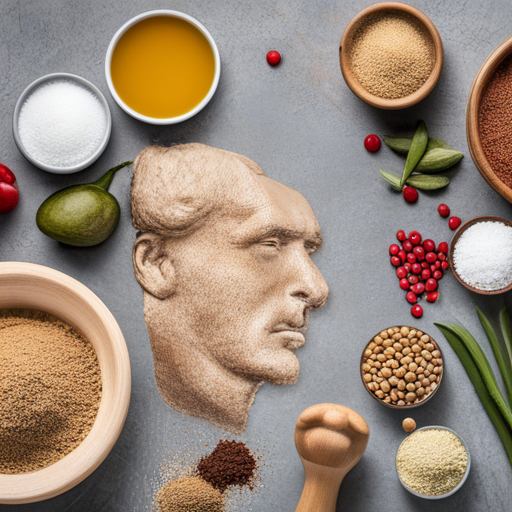
Are you tired of spending a fortune on store-bought protein powders that are often filled with artificial ingredients and unnecessary additives? If so, you’ve come to the right place! In this blog post, we will guide you through the process of making your own protein powder from scratch. Not only will you have full control over the ingredients, but you’ll also save money in the long run. Get ready to embark on a journey to create a customized protein powder that perfectly suits your taste and dietary needs.
Why Make Your Own Protein Powder?
Before we dive into the process of making your own protein powder, let’s discuss why it’s worth the effort. Here are a few compelling reasons:
1. Control Over Ingredients
By making your own protein powder, you have complete control over the ingredients you use. You can choose high-quality protein sources, such as whey, casein, soy, or pea protein, and avoid any potential allergens or additives that might be present in commercial products.
2. Customization
Everyone has different dietary needs and taste preferences. Making your own protein powder allows you to customize the blend according to your specific requirements. Whether you prefer a certain flavor, need an extra boost of vitamins and minerals, or want to avoid certain ingredients, creating your own powder gives you the flexibility to tailor it to your liking.
3. Cost Savings
Store-bought protein powders can be quite expensive, especially if you use them regularly. By making your own, you can save a significant amount of money in the long run. Bulk purchasing ingredients and creating your own blends can be a cost-effective alternative.
Now that we’ve established the benefits of making your own protein powder, let’s move on to the step-by-step process.
The Step-by-Step Process
Creating your own protein powder may sound daunting, but it’s actually quite simple. Follow these steps to make your personalized blend:
1. Choose Your Protein Source
The first step is to select the protein source for your powder. Some popular options include whey protein, casein protein, soy protein, and pea protein. Each protein source has its own unique properties and benefits. Whey protein, for example, is quickly absorbed by the body and is a complete protein. On the other hand, soy protein is plant-based and suitable for vegans and vegetarians. Consider your dietary needs and preferences when choosing the protein source.
2. Decide on Additional Ingredients
After selecting your protein source, you can choose to add additional ingredients to enhance the flavor and nutritional profile of your protein powder. Some common options include:
a. Flavorings:
You can add natural flavorings such as cocoa powder, vanilla extract, or powdered fruits to give your protein powder a delicious taste.
b. Sweeteners:
If you prefer a sweeter powder, you can add natural sweeteners like stevia, monk fruit extract, or honey.
c. Nutritional Boosters:
If you want to increase the nutritional value of your powder, you can add ingredients like ground flaxseed, chia seeds, or powdered greens.
3. Measure and Blend
Once you have chosen your protein source and additional ingredients, it’s time to measure and blend them together. Use a kitchen scale to measure the desired quantities of each ingredient. Start with a base of protein powder (around 70-80% of the total blend) and then add the flavorings, sweeteners, and nutritional boosters according to your taste preferences.
Transfer all the ingredients to a blender or food processor and blend until everything is well combined and you have a fine powder. Make sure to blend in short bursts to avoid overheating the mixture. If you prefer a smoother texture, you can sift the powder through a fine-mesh sieve after blending.
That’s it! Your homemade protein powder is now ready to be enjoyed. Transfer it to an airtight container and store it in a cool, dry place.
Tips for Success
While making your own protein powder is a straightforward process, here are a few tips to ensure success:
1. Quality Ingredients
Choose high-quality ingredients for the best results. Opt for organic, non-GMO, and reputable brands whenever possible. This ensures that your protein powder is free from harmful chemicals and additives.
2. Experiment with Ratios
Don’t be afraid to experiment with different ratios of protein sources and additional ingredients to find the perfect blend for your taste buds. Start with smaller batches and adjust the ratios as needed.
3. Store Properly
To maintain the freshness and quality of your homemade protein powder, store it in an airtight container in a cool, dry place. Avoid exposing it to moisture or extreme temperatures.
4. Label and Date
Remember to label your homemade protein powder with the ingredients and date of preparation. This helps you keep track of its freshness and know when it’s time to make a new batch.
Conclusion
Congratulations! You now have all the information you need to create your own protein powder from scratch. By making your own powder, you have the power to control the ingredients, customize the flavor, and save money in the process. Remember to choose high-quality ingredients, experiment with different ratios, and store your powder properly to maintain its freshness.
Creating your own protein powder is not only a cost-effective and healthier alternative to store-bought options but also allows you to personalize your blend to suit your specific needs and preferences. So, get creative, have fun, and enjoy the satisfaction of knowing exactly what goes into your protein powder!